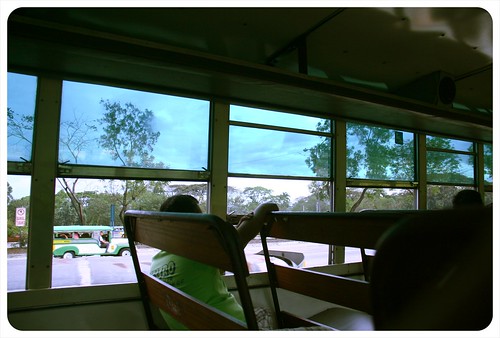So, you believe in socialism, why do you use Facebook, your phone and laptop, why do you wear branded jeans or shoes or eat at fastfood chains, all “products of capitalism”?
This is a typical rhetoric, and a stupid one at that, I get many times from those who are just eager to try and discredit activists and leftists but refuse to engage in ideological tussle.
The first answer is, most often, necessity. So, what do you expect us to wear, loincloths? Second, just so they realize, “capitalism” did not manufacture those products. Industries and the labor of many workers in socialized production did in assembly lines across the globe. We do not owe our shoes, clothes, computers and cars to “capitalism.” Capital did not manufacture them, labor did. In fact, capitalists barely have any participation in production, it is simply by virtue of control and ownership that they appropriate the wealth created by socialized production, and leave the rest scrounging for trickled down salaries and wages.
There is this prevalent and misguided notion among several sectors of the ‘educated class’ that the cause of a person’s or a family’s poverty and want is a function of one’s lack of “diskarte” as they call it, or even more insulting, a function of one’s indolence (echoing Spanish colonial friars), or worse, a function of the number of children in the family.
If that were the case, then they should agree with the idea that the primary solution, then, to the persistent poverty that cripples majority of Filipinos is a nationwide psychological self-help and motivation seminar and the mass castration and ligation of couples nationwide. But clearly, that is absurd as it is naive.
To close its celebration of its Quadricentennial, the University of Santo Tomas is holding a two-day festival (January 25 – 26) that hopes to recreate UST in the “perspective of the cultural milieu of old Manila at the turn of the 19th century” through “period costumes, songs, dances, poems and festivity.”
This, I think, is a great opportunity for us to appreciate the role of UST students in Philippine history. It was, after all, the period of Jose Rizal, Emilio Jacinto, Apolinario Mabini and Padre Jose Burgos. However, I am disturbed by the tendency of the administration and many students to regard this celebration as a mere pageantry of costumes and deodorized commemoration of whatever concept of grandeur they have of “old Manila,” devoid of any socio-political context of its times.
There is something particularly bothersome with the condescending arrogance displayed by some people with regard the issue of the urban poor and their problem on housing. Relying on pure legalese, they forward an overly simplified position that since “squatters” do not own the land where their shanties are built on, they deserve to be evicted–by force–using the entire arsenal of the state, to protect the property rights of the owners.
These people fail to recognize the social context of the problem. A fourth of Metro Manila, a staggering 584,425 families according to the National Housing Authority, are informal settlers. When the problem affects a significant portion of the population it ceases from becoming a purely legal problem of property rights and land ownership. It becomes a tragic social phenomenon, in much the same way as peasant landlessness is, and thus calls for fundamental political and economic solutions like agrarian land reform. It is a social phenomenon because it finds its roots in political and economic forces that compel hundreds of thousands of Filipino families to move to urban centers and “squat” on idle lands.
If you think squatters are not entitled to live in their homes, you might as well ask for the eviction of a fourth of Metro Manila for squatting on idle lands. Wow. If you don’t realize it, many of Manila’s laborers come form the urban poor. They do everything from cooking and serving your food, doing your laundry, and ironically–building your homes. You might as well ask for the paralysis of economic activity in the national capital.

I’ve been taking the ‘ordinary’ bus to school the past three weeks. ‘Ordinary’ buses are what people in Metro Manila call buses that don’t have airconditioning. They have the cheapest fares, and they are most usually the fastest among public utility vehicles (PUV’s).
Yesterday, the bus I was riding to school got ticketed for overspeeding along Commonwealth Avenue, a road known as, aside from being the country’s widest avenue, the killer highway–(it has been declared a ‘traffic discipline’ zone since the beginning of the year precisely because of this). The bus got held up by MMDA traffic enforcers for around fifteen minutes before it got ‘released’. Then it resumed speeding through Quezon Avenue!
Another reason why ordinary buses seem to be the fastest among PUV’s is that they don’t pick up passengers as often as jeepneys nor do they stop as long as jeepneys, FX taxis or air-conditioned buses when picking up passengers. That means when you hail an ordinary bus you have to jog a little in the same direction as the bus in order to grab the railings before hopping in. Sometimes they stop for passengers while in the middle of the road so you have to do some crisscrossing with other vehicles as well.
When all seats are occupied, you have to grab the overhead railings instead and stand on the aisle for the rest of the trip, or until a seat frees up. It feels like hanging on monkey bars at the playground as you sway side to side, back and forward as the bus speeds through the highway.
Since they’re the cheapest, especially on longer routes, ordinary buses are highly patronized by students, construction workers and other minimum (and below-minimum) wage earners.
I appreciate ordinary buses. Whether on provincial trips (I rode ‘ordinary’ buses to Sagada, Zambales, Infanta, Iloilo, Albay), or here in the Metro Manila, I seem to have grown a fascination over them. It doesn’t feel ordinary at all.
For a while now, I’ve been at loss as to what to blog. Scenes of devastation and the actual loss of life and property to millions of Filipinos were overwhelming. It didn’t feel right blogging about anything else where almost everything else will pale in gravity. Guilt perhaps, the very fact that I am able to blog in convenience indicates that, unlike majority of Filipinos who are poor, I am “unaffected.” For a while, blogging in the time of crisis reeked of insensitivity. Some people say blogging and online social media networks played a crucial role in the relief and rescue operations. I agree. But then again, the people who need the relief aren’t online, and prolonged online “involvement” seemed to me like a convenient excuse not to immerse with the people and get dirty with the actual operations. Posting and re-posting relief and rescue operations has to translate into actual relief and rescue operations. Many times, especially during the immediate days after the typhoons, they do, as proven by the thousands who flocked to organized relief operations. With an inept and inutile government, private citizens and civilian organizations needed to fill the vacuum in social services. But for how long? Especially when all those volunteers go back to their schools and to their workplaces?
